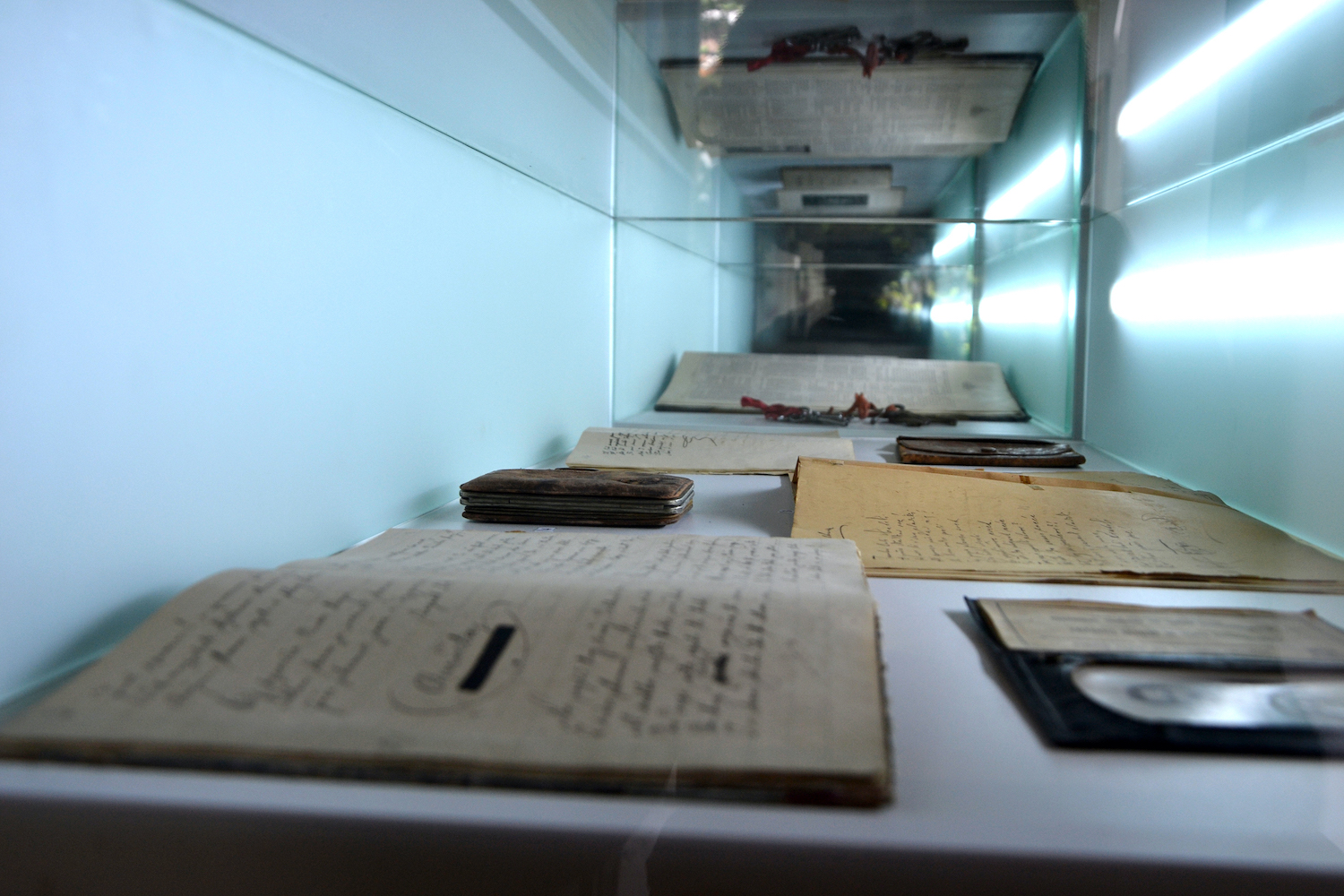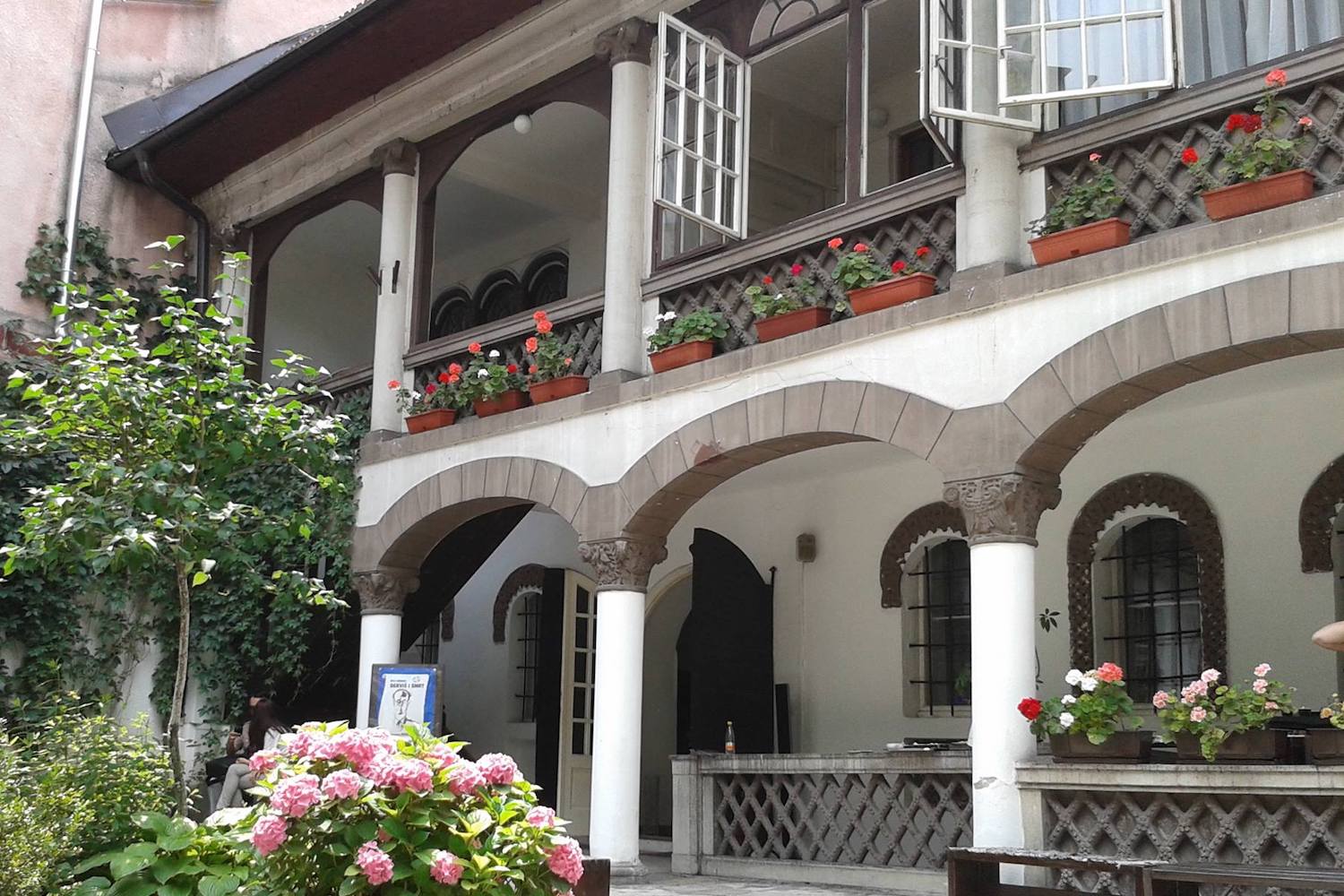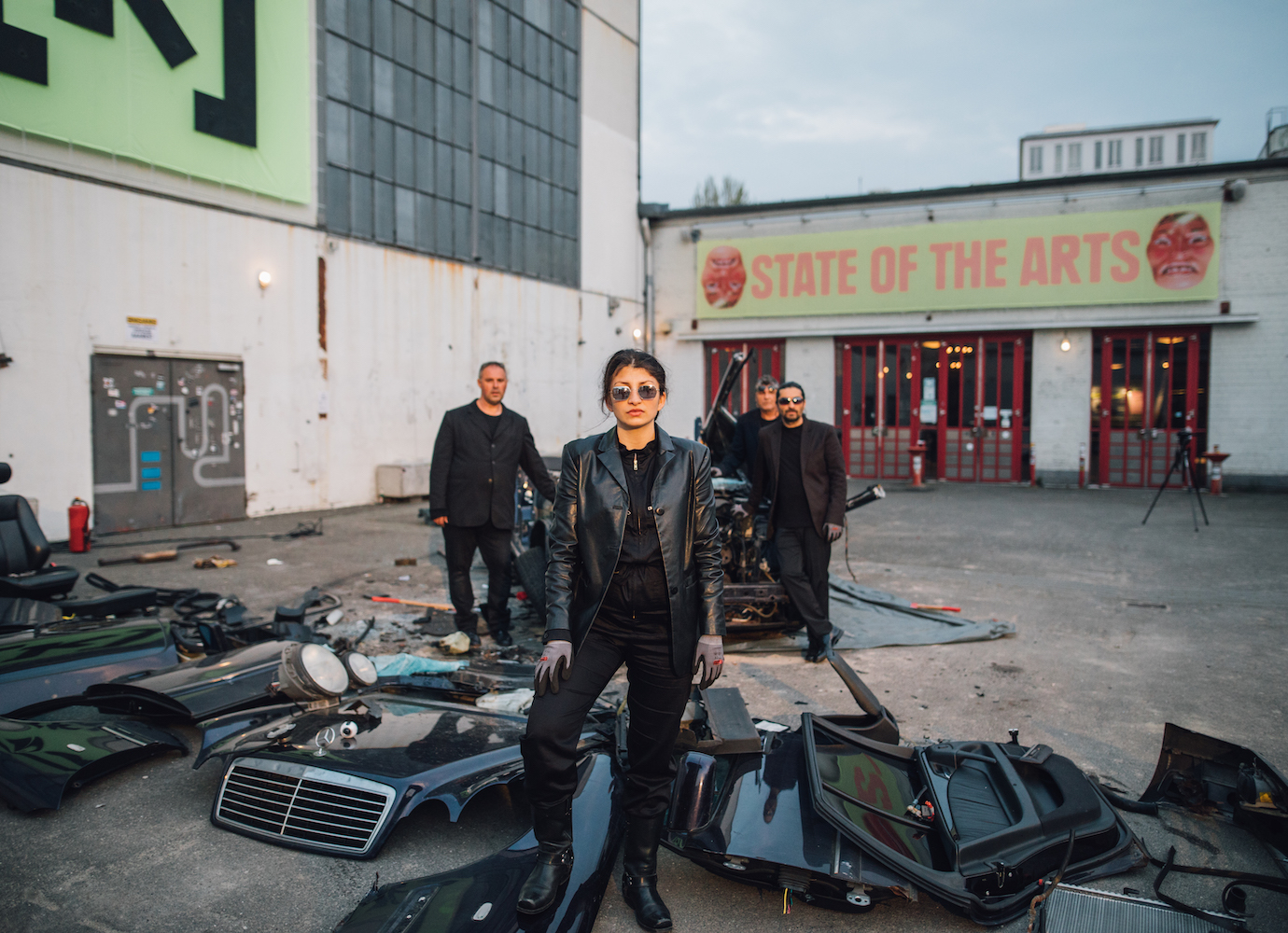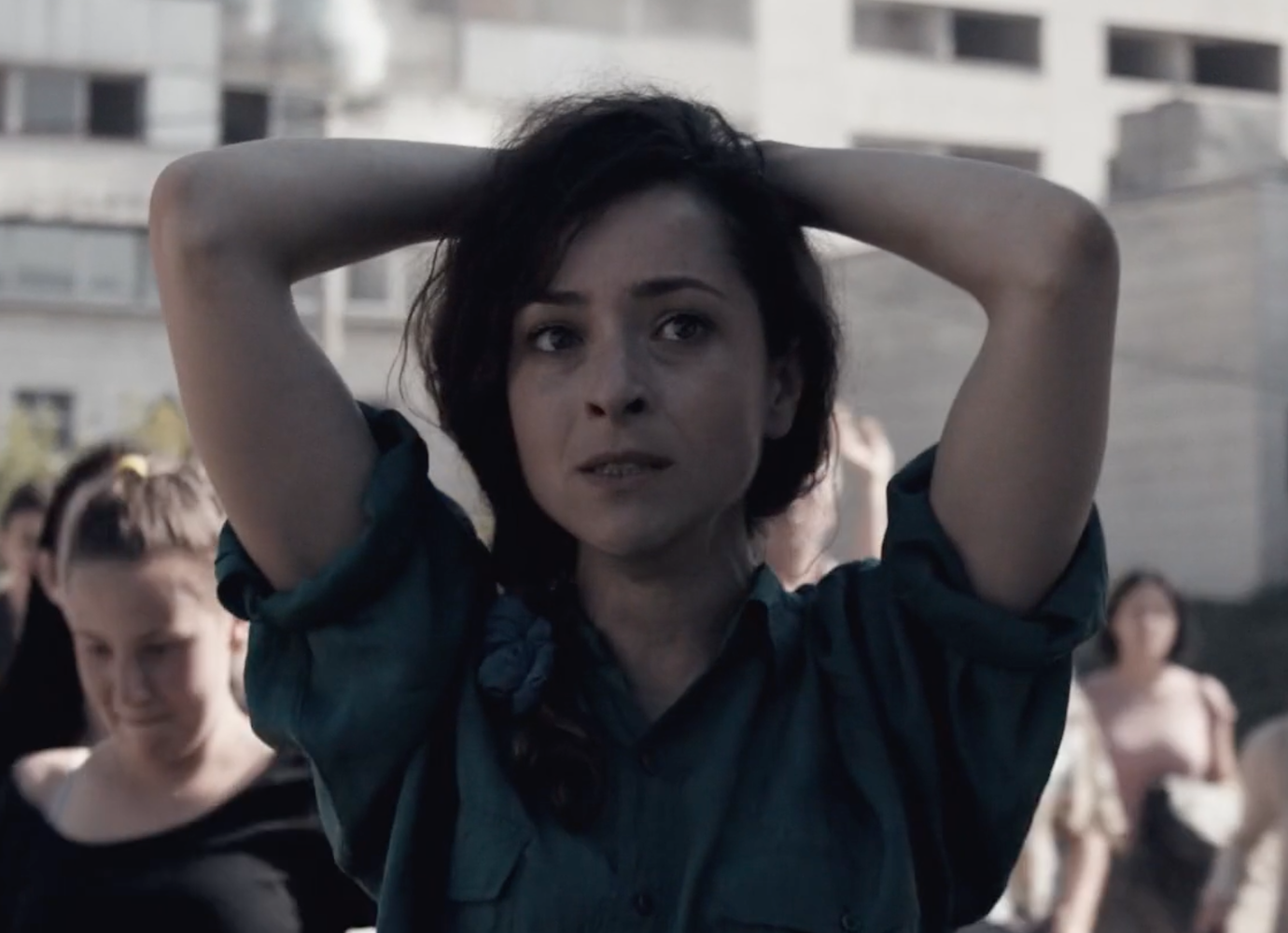‘It feels like begging:’ why Bosnia’s national museums are struggling to survive
In the last two months of 2021, Bosnia’s National Gallery wasn’t able to pay its staff their salaries. Neither was it able to cover its electricity and gas bills. Finding themselves in a precarious situation, National Gallery staff launched a public appeal.
Their pleas were heard. As a direct response, the Sarajevo district and the Sarajevo municipality directed £25,000 to the institution, covering salaries and bills for three months. But three months on, the National Gallery is once again in the same position — at least until the next call for grants comes in from May. “It feels like begging,” Maja Abdomerović, senior curator at The National Gallery, tells The Calvert Journal. “In Bosnia, like in all over the world, there is an economic crisis because prices are rising. If we launch another appeal, I am not sure we will have the popular support we received last year because the general population will get tired and say — ‘oh, it’s them again, begging for their salaries.’” While Abdomerović financially relies on her family, she is worried about the gallery’s 14 staff members. “This is not just about institutions, it’s also about the people here.”
The National Gallery of Bosnia and Herzegovina. Image: Sophie's World via Wikimedia
While the situation is critical, the problem isn’t new. Since the Yugoslav wars in 1992-1995, the gallery, just like Bosnia’s six other state museums — including the Sarajevo Museum, the National Museum of Bosnia and Herzegovina, and the Museum of Literature and Theatre Arts — have been severely underfunded. In most countries, national cultural institutions are given government funding to pay their staff, bills, and other basic running costs. Yet in Bosnia, the Dayton Peace Accords of 1995, which put an end to the war, devolved most government powers — including the legal status and budgets of national cultural institutions — to the 10 districts, or cantons, in the Bosnian Federation, rather than the central authorities. The cantons only cover a small part of these museums’ costs. As a result, Bosnia’s seven major museums are constantly on the hunt for sources of funding in order to survive.
Unfortunately, they do not always succeed. When the National Museum of Bosnia and Herzegovina found itself in a similar situation, it closed down for three years between 2012-2015. The museum was ultimately able to reopen thanks to a grant of £420,000 from the US Embassy and USAID, and £250,000 from the Council of Ministers, Bosnia’s central government. Today, the building is able to cover its costs largely by renting its historic, 19th century garden and indoor spaces for private events, such as open-air concerts, parties, or receptions.
The National Museum of Bosnia and Herzegovina. Image: Julian Nyča
For the employees of these cultural institutions, the root cause of this underfunding is not poverty, but a lack of political will. The estimated running costs of these seven institutions are a total of £1.3 million out of 1.2 billion, which constitutes the entire state budget. “How is it that the government is able to find £84,000 for the costs covering [Bosnia and Herzegovina’s] national pavilion at the Venice Biennale, but nothing for the 14 employees of the National Gallery?” Abdomerović asks.
Others argue that the museums should be self-sufficient. In 2014, the former head of Tate Modern Chris Dercon gave a lecture in the Parliament in Sarajevo on alternative financial models for cultural institutions. Mentioning the big cuts in Tate Modern’s state funding that required the London institution to find new solutions to cover its costs, Dercon advocated against “apathy” and for a more creative approach to management. Yet, Tate Modern, too, receives 30 percent of its funding from the UK’s Department of Digital, Culture, Media and Sport (DCMS). “[Dercon] had no knowledge of the local context here, falsely assuming that management, rather than politics, was the issue,” Abdomerović argues. “Can you imagine having the Tate Modern or the British Museum without any basic funding?”
The lack of government funding, however, also means less government interference. “On the bright side, we are the only institutions that have complete freedom,” Sejla Sehabovic, the director of the Museum of Literature and Theatre Arts, tells me. “All institutions that are financed by the government have financial safety but they are under complete partitocratic control. Bosnia’s state administration reserves the right to appoint all managers and workers in state-funded institutions. They are controlled by boards assigned by ruling party members who are often not competent for the oversight of the institution. That is why these institutions promote narrow ethno-national narratives with no scientific or historical basis.”
“Our ‘freedom’ and independence are the only positives in this situation,” Abdomerović agrees. “If anything, these institutions support the idea that Bosnia is older than the 90s and is more than these three ethnic groups [Bosniaks, Serbs, Croats]. We are the collateral victims of the Dayton Agreement. As long as Bosnia is divided in two, in three, it’s in no one’s interest to have these institutions. The moment Bosnia becomes a normal state, the problem of these seven institutions will be solved.”
‘As long as Bosnia is divided in two, in three, it’s in no one’s interest to have these institutions. The moment Bosnia becomes a normal state, the problem of these seven institutions will be solved’
Forced by financial concerns and political changes, Bosnia’s seven national museums have welcomed new initiatives into their historic spaces, bringing new life into their buildings, and making them more present and connected to community and public life. While I was in Sarajevo for a week last summer, the National Museum of Bosnia and Herzegovina hosted a sold-out traditional sevdah music concert by national star Damir Imamovic in its garden, the Museum of Literature rented its Ottoman-style patio for private events, and the Historical Museum of Bosnia and Herzegovina had two DJ parties organised in its concrete courtyard, as part of the Sarajevo Film Festival. Unusually, the Historical Museum also organised a paid-for birthday party involving a treasure hunt in its socialist modernist building.
Relying on such diverse sources of funding, the Historical Museum is among the most successful of these seven institutions in not only keeping itself alive but also becoming a core part of community life. “We are trying to be a hotspot for the young,” the Historical Museum curator Amar Karapus tells me. “We want them to realise that the museum belongs to them, not to us.” Constantly applying for funds from international organisations, local grants, and providing its space to private events, the museum charges those initiatives which are able to pay rent — but, crucially, provides its space to young artists for free.
Meanwhile, the National Gallery staff say they are unable to offer their space free-of-charge, or to organise all the activities they would like to. A show by the Berlin-based Roma Bosnian performance artist Selma Selman was only hosted by the National Gallery last year thanks to a grant by the European Union and the Council of Europe, obtained by the local cultural NGO AKCIJA Association. “All we have is a building,” Abdomerović bitterly says. “We’ve been through this before, so we know we will be able to get through it. It’s just sad because one cannot plan anything, take a loan, or prepare for a visit to, say, London.” “But,” she adds, “we’re still optimistic and cherish these institutions.”
A DJ party at the Historical Museum of Bosnia and Herzegovina. Image via Facebook




